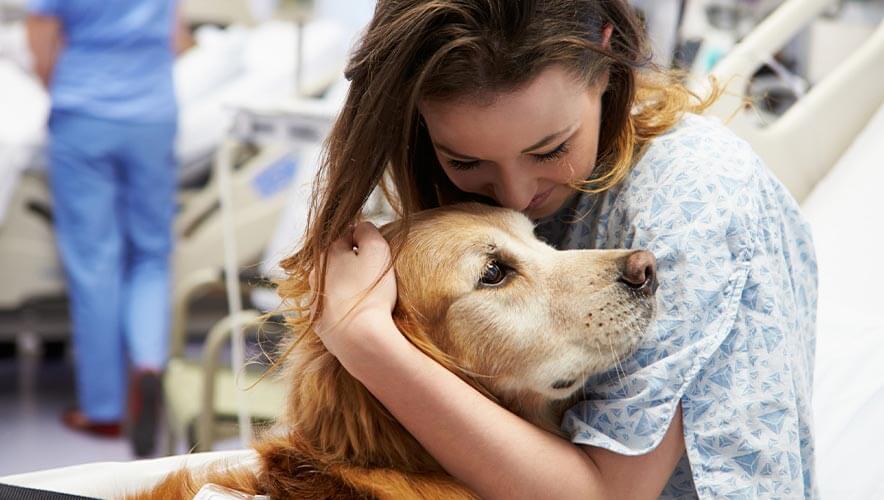Best in Security: The Most Popular Types of Working Dogs in Action
Long considered human’s best friend, dogs also make excellent working partners.
They can be trained to herd sheep, sense medical emergencies, track suspects on the run, detect explosives, and find people trapped under rubble or snow. Different breeds of dogs have different strengths and weaknesses, making them more adept at some work than others. But they all have one universal flaw.
“Dogs have just one huge mistake: they die too young,” says Ariel Kern, dog lover, K9 expert, and vice president of international affairs at Global Guardian, who shared his insights into what makes a great working dog.
Below is a list of the popular working dog breeds in use today.
Australian Shepherds
Smaller in size than other shepherd breeds, Australian shepherds are very intelligent, trainable, and need a job to keep them stimulated while burning off energy. These traits make them ideal for herding work and for search-and-rescue jobs in avalanche situations where a lightweight dog with a keen sense of smell can detect humans quickly.
Belgian Malinois
Sometimes confused with German shepherds, Belgian Malinois are distinguishable by their triangular ears and square body shapes when viewed from the side. They are very intelligent dogs with high prey drives, so they require early socialization, obedience training, regular companionship, and frequent exercise. Belgian Malinois are popular working dogs for police forces, militaries, and private security work.
Bloodhounds
When a suspect is on the run, it might be time to bring out the dogs. For many investigations teams, the preferred dog is a bloodhound. These dogs have been bred for hundreds of years to fine-tune their amazing ability to follow the scent to find people who are lost, dead, or evading detection. What gives them a nose up? Bloodhounds have 300 million scent receptors—more than any other breed—and their tracking results are often considered admissible in court.
Dutch Shepherds
Bred to keep flocks of sheep safe, the Dutch shepherd’s appearance may remind you of a wolf. These dogs are prized for their agility—important when herding and protecting sheep in a large field—as well as their obedience and tracking ability. These traits have made them popular working dogs for police units and protection jobs.
German Shepherds
Captain Max von Stephanitz registered the first German shepherd in 1889 after purchasing a wolf-like dog with yellow and gray coloring at a dog show in western Germany. Ancestors of this first German shepherd would go on to work as service dogs alongside military troops for explosives detection, cadaver searches, narcotics detection, takedowns, and more. The breed continues to be popular for service with military troops and police forces around the world.
German Shorthaired Pointers
Security work requires a great deal of energy and strong bonds with your coworkers—something that makes the German shorthaired pointer (GSP) particularly adept for security jobs. GSPs were originally bred in Germany to be hunting dogs that also made good companions. They have a strong prey drive and are extremely athletic. Today, you’re likely to see GSPs at U.S. airports for detection work—they are one of the preferred breeds for the Transportation Security Agency (TSA).
Golden Retrievers
With their origins in Scotland (thanks, Lord Tweedmouth), golden retrievers are loved not just for their beautiful coats but their outgoing nature and ability to be trained. Originally a popular hunting dog, goldens are now often used as guide dogs for people who are blind, search-and-rescue missions, and therapy dogs for people who have experienced trauma—such as an active shooter incident.
Labrador Retrievers
Not to be outdone by golden retrievers, Labrador retrievers—the black, brown, and yellow Labs many of us are familiar with—are also adaptable working dogs due to their high energy levels, friendliness with new people, need for mental stimulation, and trainability. Labradors are often used for security work, including drug and bomb detection, accelerant detection, and service and assistance.
Newfoundlands
From hauling in fishing nets in Newfoundland, Canada, to exploring the United States with Merriweather Lewis and William Clark, Newfoundlands have been a reliable breed for any activity involving water for centuries. Today, Newfoundlands are often trained to assist with water rescue missions in Italy and France due to their webbed feet, double water-resistant coat, kind disposition, and ability to haul heavy loads—even while swimming.
Megan Gates is senior editor at Security Management. Connect with her at [email protected] or on LinkedIn. Follow her on X or Threads: @mgngates.











